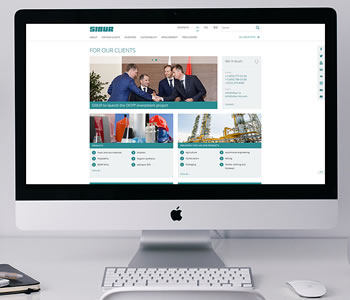TO THE READER
by Pavel Lyakhovich, member of the Management Board and Managing Director of SIBUR.
Cold season
Waiting for summer with its traditionally high sales of soft drinks, outdoor picnic cookware and garden tools proved to be in vain for companies that manufacture packaging and other products. It was the abnormal weather that upset the apple cart.
Filling the shortage
In 2019, SIBUR will launch the DOTP investment project.
“Green” packaging
SIBUR presented its products at Interpack (Germany) and RosUpack (Russia).
Fundamental gas
SIBUR upgrades Yuzhno-Balyksky GPP.
Bridging the gap
All the necessary information is now available for our Clients in a dedicated section of SIBUR's website.
A valuable practice
BIAXPLEN expands its customer communication channels to include technical workshops and webinars.
Stronger together
SIBUR and TechnoNICOL discussed key cooperation themes.
Choosing the right colour
SIBUR’s Togliatti site introduces new packaging labels.
Favourable location
SIBUR will set up a logistics hub for polymer products in the Kaluga Region.
NPP Neftekhimiya: among the best
Basell Poliolefine Italia has included the joint venture of SIBUR and Gazprom Neft in its Top-10 ranking.
Never stop learning
SIBUR becomes partner of a professional development course at the Russian University of Transport (MIIT).
Along the Silk Way
SIBUR acted as Silk Way Rally's technical partner for innovative materials.
Brand Guide
SIBUR: corporate logo use.
Private Public
Some companies came up with rules and recommendations about social networks for their employees.
I saw, I understood, I integrated
Digital business transformation acts as a catalyst of change in the chemicals market.
Universal soldier
Thermoplastic elastomers were the key topic of the customer conference held by SIBUR.
Landfill impossible recycle
From 2019, an extensive list of plastic waste will be prohibited from being buried in landfill sites.
New opportunities in the online universe
E-commerce opens up brand new opportunities for manufacturers of polymer packaging.
Face to face
How to put out a magnesium fire, manage waste and make polymers fight bacteria – those were the ideas suggested by the IQ-CHem contest participants.
Sights set on China
Asia to become a major polyethylene consumer.
Ten colours for multi-layer films
Igor Esin, CEO at TIKO-Plastic, dwells on what consumers expect from flexible polymer packaging and what can be done to satisfy them.
We can learn a lot from each other
Meet Wenzhi Zou, a new member of SIBUR’s Management Board.
TOP MANAGERS TAKING QUESTIONS
In the Q&As section, our top managers answer the most interesting and relevant questions from our clients sent to dearcustomer@sibur.ru.







